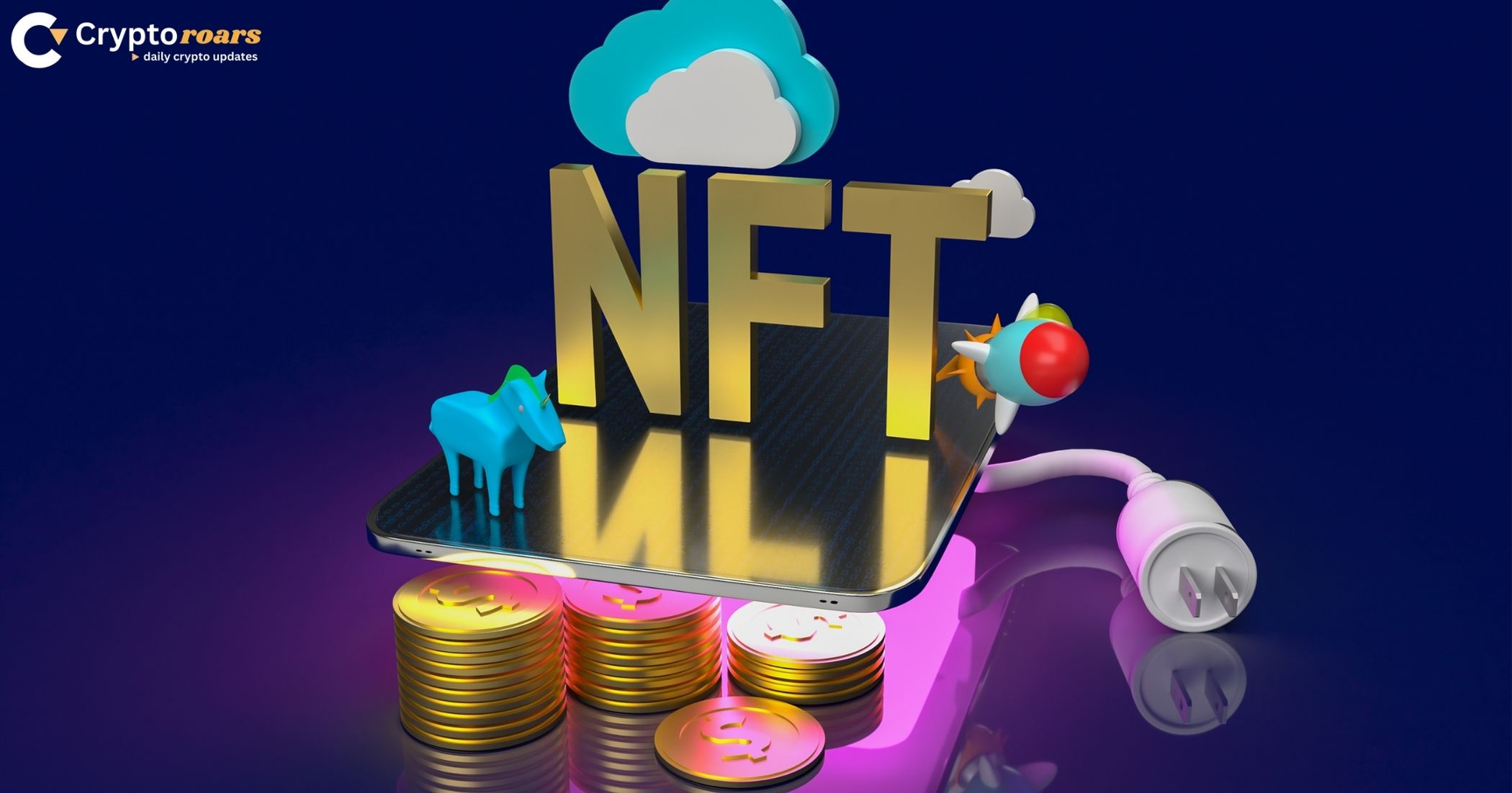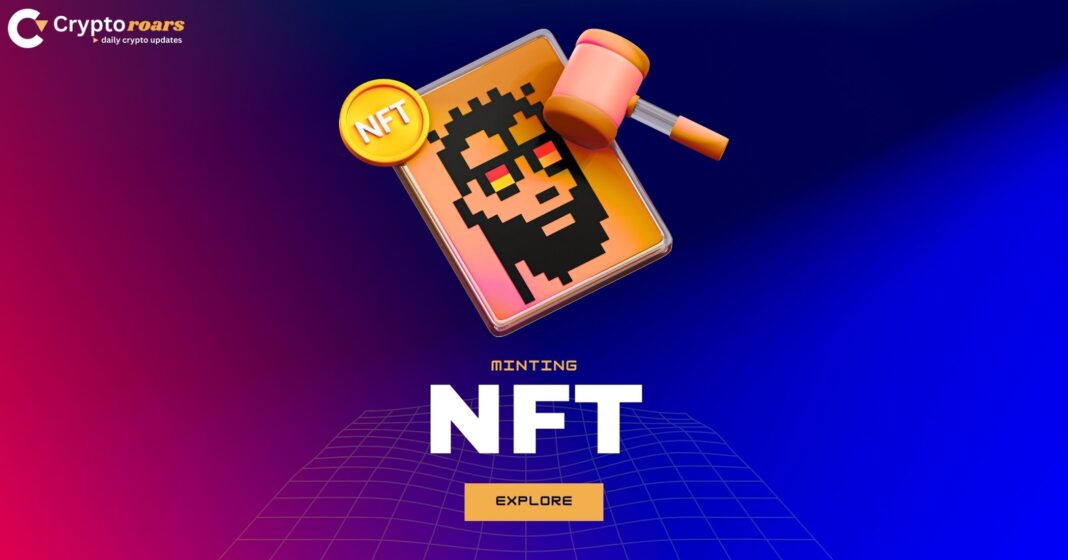The world of NFT minting has grown from being a buzzword to a billion-dollar industry, shaping the way creators, collectors, and businesses interact with digital assets. In the United States, 2025 is expected to be another crucial year for the NFT creator economy, as more people explore the potential of non-fungible tokens (NFTs) not just as collectibles, but as real investment-class assets. The rise of blockchain technology has made it possible to tokenize art, music, gaming items, and even real-world property, giving them a permanent record on the blockchain ledger that verifies authenticity and ownership.
For many, the process of minting feels complicated, but it doesn’t have to be. This complete guide will explain what it means to mint, why creators and collectors participate, how the minting process works step by step, and how costs such as gas fees and NFT listing fees impact your journey. We will also explore the role of platforms like the OpenSea marketplace, tools like the MetaMask Wallet and Coinbase Wallet, and popular blockchains like the Ethereum blockchain and Polygon blockchain. Whether you are an artist who wants royalties from digital assets, a collector seeking a digital certificate of ownership, or a business exploring NFT business management, this guide will help you understand everything in simple language.
What Does It Mean to Mint an NFT?
To mint an NFT means converting a digital file into a unique asset on the blockchain ledger. When you upload your digital art, music file, or video game skin and create an NFT, the blockchain assigns it a permanent entry, proving its originality and linking it to your crypto wallet. This digital certificate of ownership cannot be changed or duplicated, making your file part of the Web3 assets ecosystem.
The minting process is like publishing a book or releasing a movie, but instead of printing or distribution, you are recording it on a decentralized network. Every NFT minted has metadata, ownership history and can be transferred or sold through an NFT marketplace. The most popular network for minting remains the Ethereum blockchain, but 2025 has seen massive growth on the Polygon blockchain, as creators and NFT speculators/investors look for lower NFT transaction fees and faster speed.
What is the Purpose of Minting an NFT?
The main purpose of minting is to secure ownership of a digital collectible or any type of digital asset. Once minted, an NFT acts a proof of authenticity. For creators, it ensures that their work cannot be faked, copied, or sold without their permission. Collectors gain confidence knowing they hold a verifiable digital certificate of ownership stored permanently on the blockchain.
Another major reason is royalties from digital assets. When artists mint NFTs, they can set up automatic secondary sales royalties, meaning every time their work is resold in a secondary market, they earn money. This has created a new NFT creator economy where artists and content creators finally gain sustainable passive income from NFTs, unlike traditional systems where resale profits never reached them.
NFT Minting for Creators (Why Artists & Brands Mint)
For creators, NFT minting is about control, revenue, and community. A digital artist in the U.S. can upload their artwork on the OpenSea marketplace, mint it as an NFT, and sell it through a timed auction or a fixed price sale. Unlike selling physical art in galleries, this allows creators to reach a global audience instantly while ensuring they are credited as the source.
Brands are also minting NFTs as part of NFT business management strategies. From fashion labels offering exclusive digital collectibles to music companies releasing limited edition albums, the opportunities are endless. Some brands use NFTs as membership passes, unlocking real-world experiences. In 2025, American companies are looking at NFTs not just as art but as Web3 assets that enhance customer engagement.
NFT Minting for Collectors (Ownership, Value & Benefits)
Collectors mint NFTs for ownership, speculation, and cultural pride. When a collector mints an NFT, they receive proof that they own a rare digital item. This ownership is stored permanently on a blockchain like Ethereum (ETH) or Polygon (MATIC). For collectors, NFTs are both digital collectibles and potential investments in the speculative market.
Value comes from scarcity and demand. A one-of-a-kind NFT collection could appreciate if the artist becomes famous or if the community rallies around it. Collectors also benefit from the chance to resell on the secondary market, earning profits by selling NFTs at higher prices. Some even join communities around their NFTs, enjoying both financial and social value.
How to Mint an NFT Step by Step

Minting an NFT may sound technical, but the process is straightforward. First, you need a crypto wallet like the MetaMask Wallet or Coinbase Wallet. This will store your NFTs and cryptocurrencies needed to pay gas fees. Next, connect your wallet to a platform like the OpenSea marketplace, where you can upload your digital file.
After uploading, you add details such as the title, description, and properties of your NFT. You then decide how to list it, whether as a fixed price sale or a timed auction. Finally, you pay the NFT listing fee and confirm the minting transaction. Once completed, your NFT is live on the blockchain, ready for trade.
How to Mint on OpenSea with OpenSea Studio
The OpenSea marketplace is the most popular in the U.S. for minting. In 2025, OpenSea Studio has made the process even easier. After you connect your wallet, you simply create an NFT, upload your file, and choose your sale format.
OpenSea charges a service fee (2.5%) for sales, and you must pay gas fees if you mint directly on the Ethereum blockchain. However, if you choose the Polygon blockchain, minting is often free or comes with very low costs. Many U.S. creators prefer Polygon for affordability, while still reaching the same audience.
Understanding NFT Minting Costs in 2025
Minting costs are one of the most important considerations. On the Ethereum blockchain, gas fees can range from $10 to $50, depending on network activity. In comparison, the Polygon blockchain offers near-zero fees, making it the go-to for new artists.
| Blockchain | Average Gas Fee (2025) | Speed | Best For |
| Ethereum (ETH) | $10–$50 | Medium | Established collections, prestige |
| Polygon (MATIC) | <$1 | Fast | Beginners, affordable minting |
| Solana | <$0.01 | Very Fast | Gaming NFTs, bulk minting |
| BNB Chain | <$0.10 | Fast | Utility-based NFTs |
Besides gas fees, marketplaces charge an NFT listing fee or a service fee (2.5%) on each sale. If you sell for $500, expect $12.50 to go to the platform. Creators must also consider secondary sales royalties when pricing.
The Benefits of NFT Minting for Businesses and Creators
NFTs offer businesses new ways to engage customers. A company can issue an NFT collection as loyalty cards, giving holders special discounts. Musicians can sell digital collectibles instead of traditional albums, ensuring fans receive exclusive content while the artist earns passive income from NFTs.
For creators, the ability to earn secondary sales royalties forever changes the revenue model. Unlike traditional sales, where money is made once, NFTs allow artists to profit every time their work trades in the secondary market. This is a powerful shift in the NFT creator economy.
Smart NFT Minting: Choosing the Right Blockchain
Choosing the right blockchain is crucial. The Ethereum blockchain offers prestige and is considered the gold standard. However, the Polygon blockchain has gained attention for its low-cost minting. Both connect seamlessly with platforms like OpenSea and wallets such as MetaMask Wallet.
Creators who want speed and scalability often choose Solana, while businesses minting utility NFTs may prefer BNB Chain. Smart minting means evaluating not just cost, but also audience size, marketplace compatibility, and future sustainability.
NFT Minting Across Different Platforms (Ethereum, Polygon, Solana, BNB Chain)
Each blockchain has unique strengths. The Ethereum blockchain remains the most trusted for high-value NFT collections, but the Polygon blockchain is preferred for affordability. Solana’s speed makes it great for gaming and video game developers who mint large numbers of NFTs. BNB Chain attracts startups in the U.S. experimenting with tokenized memberships.
Understanding these platforms helps U.S. creators and collectors decide where to launch. Many creators even mint across multiple platforms, offering flexibility in cost and reach.
I Minted My NFT! Now What?
Minting is just the start. After you create an NFT, the next step is marketing. Creators in the U.S. often use Twitter (X), Instagram, and Discord to build a community around their NFT collection. Engaging with collectors adds value to your NFT beyond just the artwork.
You can also explore listing your NFT on multiple marketplaces for better exposure. Some even collaborate with influencers or run timed auctions to generate hype. Building trust and visibility is just as important as the minting process itself.
Common Challenges & Mistakes in NFT Minting
The most common mistake in NFT minting is ignoring costs. Many creators price too high without considering NFT transaction fees and service fees (2.5%). Others forget that without community support, even the best digital collectibles may go unnoticed.
Legal and tax issues in the U.S. also remain a challenge. NFT income is taxable, and regulations are still developing. Creators must also be cautious of scams and fake NFT speculators/investors promising unrealistic returns.
Future of NFT Minting in 2025 and Beyond
In 2025, NFT minting continues to grow beyond art. We are seeing Web3 assets like tokenized real estate, music rights, and event tickets become part of the ecosystem. Businesses are exploring NFTs for NFT business management, giving shareholders digital certificates of ownership.
The integration of AI and metaverse platforms will likely expand the use cases. As the NFT creator economy matures, both artists and collectors in the U.S. will benefit from more professional platforms, lower costs, and better legal frameworks.
Frequently Asked Questions (FAQs) on NFT Minting
1. Can you mint NFTs for free?
Yes, with options like the Polygon blockchain, creators can use lazy minting to avoid upfront gas fees.
2. What’s the average minting cost in the U.S. in 2025?
On the Ethereum blockchain, it can be $10–$50, while on the Polygon blockchain, it is often under $1.
3. Is NFT minting still profitable?
Yes, especially for creators earning secondary sales royalties and collectors who resell in the secondary market.
4. Do creators automatically earn royalties?
Yes, smart contracts allow for royalties from digital assets set during the minting process.
5. How do U.S. tax laws affect NFT earnings?
Profits from selling NFTs are treated as capital gains. U.S. creators and collectors must report income.
For more information, keep visiting cryptoroars.com


